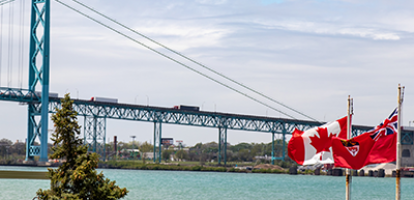From: William B.P. Robson
To: Government spending observers
Date: August 8, 2023
Re: Where Did All the COVID Spending Go?
Canadian governments’ lack of transparency is a high-profile concern – and for good reason. Alongside such problems as bureaucratic circumvention of freedom of information laws and ministers responding to questions in legislatures or from the media with mechanical talking points, government finances are far too opaque.
Which brings us to the pandemic of 2020. COVID-19 was not only a health and economic crisis, it was a fiscal crisis. It prompted unprecedented jumps in government spending and borrowing. But how much exactly was going where? We don’t know.
Two years have passed since our federal, provincial and territorial governments closed their books on the fiscal year that ran from April 1, 2020 to March 31, 2021, with its health emergencies, lockdowns and stimulus programs. Canadians and their elected representatives still know troublingly little about how governments responded – or what else they did while we were distracted by the pandemic.
We know some basics. The public accounts senior governments presented after the 2020-21 fiscal year ended show that their combined expenses hit $1.1-trillion that year – up $309-billion from the year before. Their public accounts also show that their accumulated deficits, the measure of debt that captures their ability to provide services, hit $1.4-trillion – up $368-billion from the year before. In both spending and borrowing, the federal government led the way, borrowing more than half of every dollar it spent.
But there is much we don’t know. And while governments are not normally expected to provide such detailed information, this is not a normal situation.
Did the pandemic drive the entire surge of spending and borrowing? Among the 14 senior governments, only one – the Northwest Territories – provided a table summarizing COVID-19’s impact on its revenue, expenses and bottom line. As Nicholas Dahir and I detail in our new C.D. Howe Institute report, other governments said far less. Remarkably, fewer than half of the others quantified COVID-19’s impact on health spending, and none of the others quantified its impact on the bottom line.
The public accounts these governments publish after the end of their fiscal years should explain, using simple numbers and clear language, how and why their results differed from what they projected in their spring budgets. But they often fall short of that mark. Sometimes the numbers don’t match – budgets might use different accounting or aggregation than public accounts. Some patterns – such as chronic under-projection of revenue and expense by most senior governments in the past – go unexplained. A crisis that pushes the fiscal plan off course should prompt numbers and explanations of why and how much. Transparency and accountability in the wake of COVID-19 – a crisis unlike anything in our lifetimes – fell far short of that expectation.
The sparse information in most public accounts might lead a resourceful legislator or other Canadian to look for their government’s spring budget for a baseline against which to compare the results. The pandemic did not hit until March, and governments should have presented their budgets for the fiscal year to begin on April 1 by then. But five governments did not present timely budgets. The federal government never presented a 2020-21 budget at all. In too many other cases, a search for prepandemic projections for health spending against which to compare results would have turned up nothing useful.
What we can glean from budgets and public accounts, and from other sources of information such as Statistics Canada and the compilations of health spending, including pandemic-related spending, from the Canadian Institute for Health Information, increases the frustration about this lack of systematic information.
How did governments fund pandemic-related health expenses? Some seem to have saved elsewhere in their health or overall budgets. Others, notably the federal government, seem to have spent more across the board. Did their colossal borrowing affect the burden of servicing debt? Look only at their interest payments, and the answer appears to be no. Look also at their investment income – especially the federal government’s, which took a massive hit because the Bank of Canada, which it owns, lost money on all the federal debt it bought – and the answer appears to be yes.
Transparency about public finances always matters. If budget projections are unreliable, and explanations of why results differed from projections are inadequate, we cannot hold our governments to account for the taxes they levy and the money they spend. A crisis as severe as the pandemic makes transparency all the more vital. In 2020-21, too many of Canada’s senior governments failed that test.
Opaque government is not good government. COVID-19 highlighted the fact that transparency about government finances belongs on the list of things Canadians need to fix.
William B.P. Robson is CEO of the C.D. Howe Institute.
To send a comment or leave feedback, email us at blog@cdhowe.org.
The views expressed here are those of the author. The C.D. Howe Institute does not take corporate positions on policy matters.
An earlier version of this Memo first appeared in The Globe and Mail.





